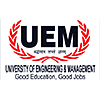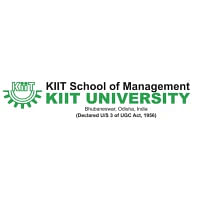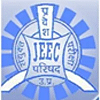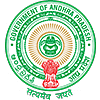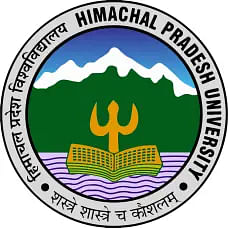
Table of Contents
The IEMJEE syllabus 2025 aligns closely with the general structure of the JEE Main exam, emphasising topics typically covered in senior secondary education like Thermodynamics, Algebra, Hydrocarbons, and others. The conducting authorities will soon release the detailed syllabus on its official website.
The Institute of Engineering & Management (IEM) conducts the IEMJEE 2025 exam. This exam is designed to evaluate candidates' proficiency in key subjects like Physics, Chemistry, and Mathematics.
Thus, candidates preparing for IEMJEE 2025 should carefully review the syllabus to ensure thorough preparation across all subjects. Continue reading this article for detailed topic-wise information on the IEMJEE Syllabus 2025 and download the PDF for the same.
IEMJEE Syllabus 2025 Key Highlights
Here are some general IEMJEE Syllabus 2025 highlights. For any updated information candidates are advised to regularly check the official examination website (iemjee.uem.edu.in/).
|
Highlight |
Description |
|
Mode |
Online and Offline |
|
Medium |
English/Hindi |
|
Number of Sections |
3 |
|
Number of Questions |
120 |
|
Total Marks |
360 |
|
Negative Marking |
Yes (1 mark will be deducted for each wrong answer) |
|
Type of Questions |
Multiple Choice Questions |
|
Course-wise IEMJEE Syllabus 2025 |
B.Tech: The syllabus is the same as of JEE Mains comprising Physics, Chemistry and Mathematics. B.Tech Lateral Entry: The syllabus will be the same as the WB JELET exam. BCA (H)/ BBA (H): The syllabus will also consist of General Knowledge, English and Preliminary Mathematics. M.Tech: The syllabus will be the same as the GATE exam. MCA: The syllabus will be the same as the WB JECA exam. MBA: The syllabus will be the same as the CAT exam. |
Subject-wise IEMJEE Syllabus 2025
The IEMJEE syllabus 2025 is based on the syllabus of the JEE Mains exam and various other entrance tests. Checking the subject-wise IEMJEE syllabus 2025 before starting the preparation can help candidates cover each topic comprehensively. They can also focus on the most important topics included within the syllabus.
The following tables will provide a complete overview of the IEMJEE syllabus 2025 of each subject:
IEMJEE Physics Syllabus 2025
The Physics syllabus for IEMJEE 2025 is designed to evaluate students' understanding of core concepts in physics, drawing from topics typically studied in high school. Below is a comprehensive overview of the major areas of focus:
|
Topic |
Description |
|
Mechanics |
This section covers the basics of motion, including the study of velocity, acceleration, and forces acting on objects. Students are expected to understand the laws governing motion, such as Newton's laws, and apply them to different physical systems. Additionally, concepts of work, energy, power, and circular motion are explored, as well as the principles of gravitation and satellite motion. |
|
Thermodynamics |
Thermodynamics in this syllabus focuses on the laws of heat, energy conservation, and temperature. Students should be familiar with concepts like heat transfer, thermal properties of matter, specific heat, and the behaviour of gases. A key component is understanding the first, second, and third laws of thermodynamics and their applications in real-world systems like engines and refrigerators. |
|
Waves and Oscillations |
This topic includes the behaviour of waves and oscillations, such as sound waves and simple harmonic motion (SHM). The study includes wave properties, the superposition principle, and the phenomenon of interference. |
|
Electrostatics |
Electrostatics involves the study of stationary electric charges and their interactions. Students should be familiar with Coulomb's law, electric fields, potential energy, and the effects of electric charges on surrounding materials. This section also covers Gauss’s law, which is used to determine electric fields in symmetrical charge distributions. |
|
Current Electricity |
In this section, students will study the flow of electric charge in circuits. Topics include Ohm’s law, resistance, Kirchhoff’s laws, and the concepts of electric current, voltage, and power in various types of circuits. Understanding the relationship between current and voltage is crucial, along with the behaviour of conductors and insulators in electrical systems. |
|
Magnetism |
Magnetism covers the study of magnetic fields, including how they are created by moving charges and their effects on materials. Students will explore the magnetic force on current-carrying conductors, the Earth’s magnetic field, and applications of magnetism such as in solenoids and motors. |
|
Electromagnetic Induction and Alternating Currents |
Electromagnetic induction involves understanding how a changing magnetic field can produce electric current. This section also covers alternating current (AC) circuits, including concepts such as impedance, reactance, and the behaviour of resistive and inductive elements in AC circuits. Students will learn how power is generated, transmitted, and used in electrical systems. |
|
Optics |
The optics section examines the behaviour of light, focusing on reflection, refraction, and image formation through lenses and mirrors. Students are expected to understand concepts such as focal length and magnification. Wave optics, including interference, diffraction, and polarisation, is also a key topic in this section, with applications in instruments like microscopes and telescopes. |
|
Modern Physics |
Modern physics explores the advancements in physics that emerged in the 20th century. Key topics include quantum mechanics, the photoelectric effect, and the study of atomic and nuclear structures. Students will also learn about the properties of nuclei, radioactive decay, and nuclear reactions, including the processes of fission and fusion. |
|
Electronics and Communication |
This section covers the fundamentals of electronics, including semiconductors, diodes, and transistors. Students will learn about the working principles of various electronic components and circuits. Communication systems, such as modulation and demodulation techniques used in broadcasting, are also covered, along with the basics of satellite communication and electronic signals. |
IEMJEE Mathematics Syllabus 2025
The IEMJEE Mathematics syllabus for 2025 is designed to evaluate candidates' understanding of essential mathematical concepts needed for an engineering program. Below is a detailed overview of the key topics that will be assessed in the exam:
|
Topic |
Description |
|
Algebra |
In this section, students will be expected to solve quadratic equations, work with polynomials, and understand the properties of functions and their graphs. Key areas also include the concepts of sequences and series, including arithmetic and geometric progressions, and the application of mathematical induction to prove statements. |
|
Calculus |
To excel in this topic students must have a solid understanding of limits, continuity, and differentiability. Additionally, the syllabus includes the application of derivatives in motion problems, rates of change, and maxima-minima problems. |
|
Coordinate Geometry |
Coordinate geometry involves the study of geometric objects using a coordinate system. The IEMJEE syllabus covers concepts such as the distance formula, section formula, and the equations of straight lines, circles, and conic sections (parabolas, ellipses, and hyperbolas). |
|
Trigonometry |
The trigonometry section deals with the study of angles, triangles, and trigonometric functions. The syllabus also covers inverse trigonometric functions, properties of trigonometric functions, and solutions to triangles using the law of sines and cosines. |
|
Vectors and 3D Geometry |
This section involves the study of vector quantities and their operations. In 3D geometry, key topics include the equations of lines and planes, the distance between a point and a plane, and the angle between two lines or two planes. |
|
Probability and Statistics |
The probability section covers basic probability theory, including the calculation of probabilities for simple and compound events. In statistics, the focus is on measures of central tendency (mean, median, and mode), measures of dispersion (variance and standard deviation), and the study of various types of distributions. |
|
Matrices and Determinants |
This section introduces matrices, their operations, and their properties. The syllabus includes the calculation of the determinant of a matrix, the adjoint of a matrix, and the inverse of a matrix, as well as the application of Cramer's rule for solving systems of linear equations. |
|
Linear Programming |
Linear programming involves the optimization of a linear objective function, subject to linear constraints. |
|
Complex Numbers |
The study of complex numbers involves understanding the properties of numbers of the form a + bi, where a and b are real numbers and i is the imaginary unit. |
|
Sets, Relations, and Functions |
This section covers the fundamental concepts of set theory, including operations on sets (union, intersection, and complement) and Venn diagrams. The concept of bijections, injections, and surjections is also an important area of focus. |
IEMJEE Chemistry Syllabus 2025
The syllabus is divided into three main areas: Physical Chemistry, Organic Chemistry, and Inorganic Chemistry, each covering a range of topics essential for the study of engineering. Below is a detailed overview of the topics included in the IEMJEE Chemistry syllabus 2025:
|
Physical Chemistry |
|
|
Topic |
Description |
|
Basic Concepts of Chemistry |
Includes the study of atoms, molecules, chemical equations, and stoichiometry, focusing on the mole concept and molar mass. |
|
States of Matter |
Covers the properties and behaviour of solids, liquids, and gases, including the ideal gas laws, real gases, and the kinetic theory. |
|
Thermodynamics |
Explores energy changes in reactions, covering concepts such as enthalpy, entropy, and Gibbs free energy, along with the first law of thermodynamics. |
|
Equilibrium |
Focuses on chemical equilibrium, Le Chatelier’s principle, equilibrium constants, and their applications to gases, acids, and bases. |
|
Redox Reactions |
Covers oxidation and reduction, electrode potentials, and electrochemical cells, along with balancing redox reactions. |
|
Chemical Kinetics |
Studies the rates of chemical reactions, factors affecting reaction rates, and reaction mechanisms. |
|
Surface Chemistry |
Includes the study of adsorption, catalysis, colloids, and surface tension, with practical applications. |
|
General Principles of Isolation of Elements |
Focuses on methods like roasting, smelting, and refining for extracting metals from ores. |
|
Organic Chemistry |
|
|
Topic |
Description |
|
Basic Principles and Techniques |
Introduces the fundamentals of organic chemistry, including functional groups, nomenclature, and laboratory techniques like distillation and chromatography. |
|
Hydrocarbons |
Covers alkanes, alkenes, alkynes, and aromatic compounds, focusing on their structure, properties, and reactions. |
|
Haloalkanes and Haloarenes |
Explores the preparation and reactions of compounds containing halogens, including substitution reactions. |
|
Alcohols, Phenols, and Ethers |
Discusses the properties, preparation, and reactions of alcohols, phenols, and ethers. |
|
Aldehydes, Ketones, and Carboxylic Acids |
Covers the structure, properties, and reactions of these compounds, including nucleophilic addition and reduction. |
|
Organic Compounds Containing Nitrogen |
Includes the study of amines, cyanides, and isocyanides, and their reactions and applications. |
|
Biomolecules |
Covers the structure, properties, and functions of carbohydrates, proteins, lipids, vitamins, and nucleic acids. |
|
Polymers |
Studies the types, properties, and applications of synthetic and natural polymers, including polymerization techniques. |
|
Chemistry in Everyday Life |
Focuses on the role of chemistry in daily life, including the study of soaps, detergents, drugs, and food preservatives. |
|
Inorganic Chemistry |
|
|
Topic |
Description |
|
Classification of Elements and Periodicity |
Covers the periodic table, trends in atomic properties, and the classification of elements into s, p, d, and f blocks. |
|
Isolation of Elements |
Covers the chemistry of elements from Groups 15, 16, 17, and 18, including their properties and reactions. |
|
p-Block Elements |
Explores methods of extracting and refining metals from ores. |
|
d- and f-Block Elements |
Studies the transition and inner transition metals, focusing on their oxidation states and chemical properties. |
|
Coordination Compounds |
Explores the structure, bonding, and nomenclature of coordination compounds and their applications. |
|
Environmental Chemistry |
Covers air and water pollution, greenhouse gases, waste treatment, and sustainable chemistry. |
IEMJEE Syllabus 2025 PDF
The IEMJEE syllabus 2025 can be downloaded from its official website. Here are the steps to download the IEMJEE syllabus 2025:
- Go to the official IEMJEE website (iemjee.uem.edu.in/).
- Navigate to the "Syllabus" or "Examination" section, typically found in the main menu.
- Look for the "IEMJEE Syllabus 2025" link or a similar heading in the section.
- Click on the syllabus link to open the PDF file.
- Download or save the PDF to your device for easy access.
Students can download the IEMJEE syllabus by clicking the link below:
|
IEMJEE Syllabus 2025 PDF |
IEMJEE Syllabus 2025 Important Topics
In the IEMJEE syllabus, each topic and subtopic has its own significance. Focusing on these topics can help candidates in scoring well in IEMJEE 2025. Below are some key focus areas of each section of the IEMJEE syllabus 2025:
|
Section |
IEMJEE Syllabus Important Topics |
|
Physics |
1. Mechanics 2. Thermodynamics 3. Electrostatics 4. Current Electricity 5. Magnetic Effects of Current and Magnetism 6. Optics 7. Modern Physics |
|
Mathematics |
1. Algebra 2. Calculus 3. Coordinate Geometry 4. Vectors and 3D Geometry 5. Trigonometry 6. Statistics and Probability |
|
Chemistry |
1. Physical Chemistry
2. Organic Chemistry
3. Inorganic Chemistry
|
IEMJEE Syllabus 2025 Points to Remember
The following points must be kept in mind when preparing for the IEMJEE exam 2025 using the IEMJEE syllabus 2025:
- The IEMJEE 2025 syllabus includes a comprehensive range of topics in Mathematics, Physics, and Chemistry, covering foundational and advanced concepts across all subjects.
- The Physics syllabus emphasises key areas such as Mechanics, Thermodynamics, Electrostatics, and Modern Physics, with a focus on theoretical principles and practical applications.
- In Mathematics, the syllabus covers topics including Calculus, Algebra, Coordinate Geometry, and Statistics, with an emphasis on problem-solving and analytical reasoning.
- Chemistry topics include Physical Chemistry, Organic Chemistry, and Inorganic Chemistry, focusing on key principles like Chemical Equilibrium, Thermodynamics, and Coordination Compounds.
These points outline the essential topics and structure of the IEMJEE 2025 syllabus, which are important to remember to score decent in final examination.
